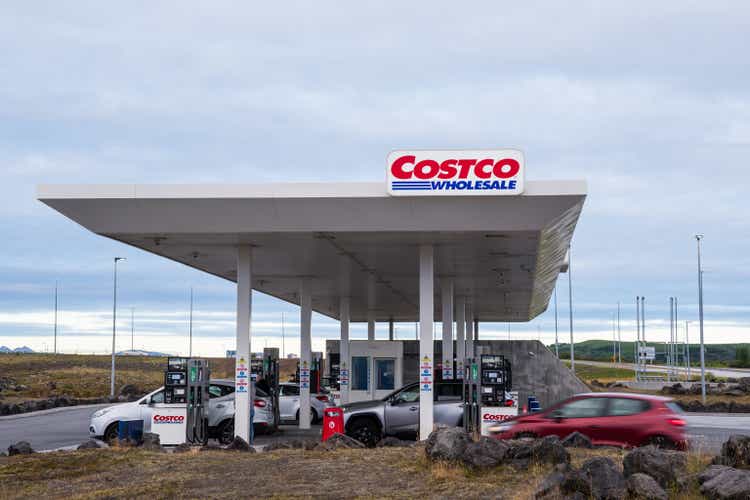Gestur Gislason/iStock Editorial via Getty Images
Costco (NASDAQ:COST) is a household name that needs no introduction. When peers from Walmart (WMT) to Target (TGT) are having trouble managing inventory and margins in a highly inflationary environment, the 830 membership warehouse operator delivered an enviable 1Q22 with revenue of $52.6 billion (+16% YoY) and EPS of $3.04 (+10.7% YoY), which both beat consensus estimates. Total comparable sales were up 14.9% and 10.8% ex-gas while e-commerce was up 7.4% against a strong 41% growth rate in 1Q21. Despite gross margin being down to 10.2% vs. 11.2% last year, pretax margin came in at a respectable 3.5% vs. 3.6% in 1Q21.
Costco’s membership model remains a key value driver with its annual fees representing roughly 1.9% of revenue. In 1Q22, membership revenue was up 9.2% YoY to $984 million with a renewal rate of 92.3% in US and Canada (+0.3% QoQ) and 90% worldwide (+0.4% QoQ). At the end of the quarter, Costco had 64.4 million households and 116.6 million cardholders (+6% YoY), of which 27.9 million executive members accounted for 71% of worldwide sales. Historically, Costco raised membership fees every 5.5 years in the last 3 times. Though management is yet to make a decision this year (last increase was June 2017), note that the average Costco cardholder is 52 years old with ample spending power to handle a price hike. Additionally, the 2% reward for executive members should easily offset their annual fees.
As a housekeeping topic, inflation does have a material impact on Costco in the form of higher energy costs and supply chain disruptions. In 1Q22, management estimated price inflation of ~7% vs. 6% in 4Q21 and 4.5% to 5% in 3Q21. While inventory was up 26% YoY, inflation was a bigger factor than overall unit growth, which is a relative positive vs. peers. Indeed, gross margin was impacted by higher gasoline sales, but this should improve as oil prices begin to normalize.
Despite the turmoil in China, Costco’s Shanghai warehouse was back to operation on May 18 after shutting down for 6 weeks in 1Q22. Fortunately, the Suzhou warehouse was able to avoid a lockdown as Covid cases spiked across the country. In December 2022, Costco will open its third warehouse in China, with 4 additional warehouses planned for FY23 and FY24. By the end of FY22, ending in August, Costco should have opened a total of 27 new warehouses (3 relocations and 24 new) globally. Obviously, there’s still plenty of runway in China with just 7 warehouses by FY24, considering Costco already has 14 locations in Taiwan.
Costco’s shares traded as high as 44x NTM earnings in mid-April when money flew quickly from tech to defensives. Following Target’s disappointing Q1 results on 5/18 (analysis here), Costco dropped more than 12% in one day as investors realized overvalued defensives were no longer defensive (in fact dangerous). The company is expected to deliver EPS of $14.4 in the next fiscal year ending in August 2023, which comes down to a forward P/E multiple of 32x vs. 40x based on Street’s average price target of $580. Despite Costco’s above-average execution in this difficult environment, valuation remains demanding and target multiple aggressive, in my view. If there’s one thing I’ve learned from this market, it’s that valuation does matter, and buying a great company at any price usually offers little to no upside even if everything else goes right. For now, I’d patiently remain on the sidelines until the next selloff.


Be the first to comment